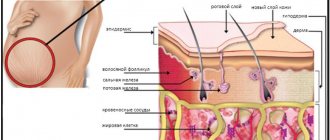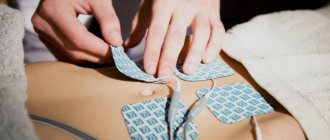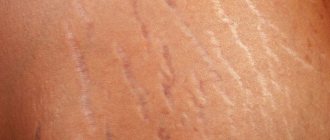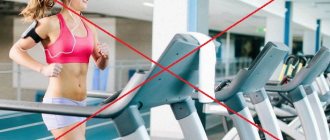Pregnancy and childbirth radically change a woman's body. The main burden falls on the stomach: it is he who must accept new life into his arms for a sufficiently long period of time, create all the conditions for its normal development. The volume of the abdomen increases due to the growing uterus, which becomes 50 times larger during the entire period of gestation! This is logical, since it must withstand the weight of the placenta (1 kg) and amniotic fluid (2 l). As the stomach grows, it pulls along the skin, muscles, ligaments, tendons - all the soft tissues located in the abdominal area.
Causes of postpartum belly
After pregnancy, the belly is in no hurry to shrink - this is the norm. Nine months is a decent amount of time to get into the physiological habit of being big. Moreover, after childbirth, a lot of lymph and blood accumulate in the abdominal cavity, which prevents the stomach from immediately becoming flat as before.
Besides:
- the uterus, according to the laws of physiology, contracts gradually over a couple of weeks, but finally comes to its senses after the entire internal surface of the organ has turned into a continuous wound, within a couple of months;
- stretched muscles of the anterior abdominal wall, which gradually regain their tone after the action of the hormone relaxin, are restored within a year;
- the skin even longer tries to acquire its usual volume, since the synthesis of its own collagen and elastin is individual for everyone, which is why a sagging belly often appears after childbirth;
- The “swelling” of the postpartum abdomen is aggravated by the hormones remaining in the form of a fat layer, which took care of the proper development of the baby, and the sedentary lifestyle of the young mother, which provokes obesity.
- Another cause of a large belly after childbirth may be diastasis - the divergence of the fibers of the aponeurosis
located between the rectus muscles of the anterior abdominal wall. The phenomenon is quite common, but in 85% of cases it disappears within a year on its own. If this does not happen, this is a reason to seek advice from a surgeon.
How to get your figure back after childbirth
Beauty requires sacrifice, which means that in order to remove belly fat after childbirth at home, you need to work hard. By combining all possible methods, you are sure to achieve positive results.
Bandage and tying
If the question is how to tighten your stomach after childbirth without resorting to exercise, try the following remedies.
- Bandage. Prevents belly sagging by supporting it, helps avoid stretch marks, reduces stress on the spine and legs. Pay attention to the universal bandage that can be used both during pregnancy and after childbirth. However, many doctors involved in postpartum recovery are categorically against the bandage. The pelvic floor after childbirth is weak, and the internal organs sink into the resulting empty space formed by weakened muscles, and this is fraught with unpleasant consequences.
- Shapewear. Supports sagging belly and breasts, preventing them from stretching further. Helps the uterus contract faster and prevents prolapse of the internal organs due to lack of muscle tone, and also reduces the load on the spine and simply makes the figure slimmer.
- Tying. Performs the same functions as a bandage and shapewear, that is, it is intended to bring the tone of the abdominal muscles back to normal. The advantage is that it is economical; for tying, you can take any long scarf like a sling. They tie it while lying down, place the fabric on the stomach and wrap it around the waist, cross it on the back and tie a knot under the stomach. The first layer will tighten the stomach, and the second will support it. The scarf should be worn for at least two weeks.
Proper nutrition
It is worth remembering that all kinds of diets are strictly prohibited when breastfeeding. This is due to the fact that if a nursing woman loses more than 1 kg of weight per week, the toxins produced during the rapid breakdown of fats will enter the milk and harm the baby. Diets can also weaken milk production.
Pay attention to a balanced healthy diet. Fruits and vegetables, lean meat and fish, and dairy products will be beneficial for both you and your baby. Avoid sweets, baked goods, sausages and canned goods. Drink more water. Remember that the health of your baby directly depends on your health.
Can the problem “resolve” on its own?
The answer to this question is ambiguous. It all depends on a number of points:
- firstly, it depends on whether the delivery was natural or artificial (caesarean section): with a natural delivery it is much faster;
- depending on the age of the mother: the younger, the faster the recovery;
- depending on the type of birth: after the first, the recovery process is almost ideal, but with the second and third it requires more and more effort;
- postpartum metabolism matters; the more intense it is, the faster you can get rid of fat deposits;
- finally, heredity plays a role: the constitution and structure of the skin directly affect the speed of rehabilitation.
It should be noted that breastfeeding also contributes to recovery after childbirth: with each feeding, the uterus decreases in size, and a proper diet helps natural weight loss. The rest depends on the woman’s persistence and desire to return to her previous forms.
The birth of a baby is happiness! Don't let anything get you down
Almost immediately after giving birth, every woman panics about the appearance of her belly, a sort of hanging empty bag. Don’t be upset, everything will be restored, especially if you had strong abs before giving birth. Be sure to take a postpartum bandage to the maternity hospital; it will help the muscles remember their previous state, and you can revive the sensations of a retracted abdomen.
Recover harmoniously
A voluminous belly looks mainly not because of the kilograms you have gained, but because of overextended muscles. Don’t rush to go on a diet and lose weight; it’s better to slowly start doing physical exercises after a month, provided that the birth was without complications and took place naturally. After a cesarean section, you can begin classes after 2 - 2.5 months. By the way, initially strong abs come to their prenatal state on their own after about a couple of months. And don’t believe the advertising - “remove your belly in a week” and the like - it’s all nonsense. To be honest, it takes about 9 months for the body to fully recover after childbirth. During the months of pregnancy, hormonal changes have occurred, quite global, and if balance has not been achieved in the body, it will be difficult to lose kilos.
Hold the bar and kiss the baby
This is not for me, this is for the baby
If you are breastfeeding, try to eat a balanced diet. Do not strive for rich and high-calorie food, this will not benefit either you or the baby - full-fat milk causes stool disorders and colic.
Quick view
LEVRANA Lavender tummy massage oil, 50 ml.
A lot of
Article: MO04
500 rub.
— +
With the right diet, there will be enough nutrients in milk, and you will gradually get rid of extra pounds.
Without fanaticism, remember: You are Mom, you are beautiful
Before starting fitness classes or doing exercises on your own, it is better to consult your doctor. He will tell you how to calculate the level of initial loads. The main thing is not to harm the body, which is still quite weakened. And don’t overdo it if you are breastfeeding – your milk may become less and the taste may change. But short, but regular (the best daily) exercises will help quickly tone your muscles and burn belly fat. We recommend starting to lie on a cushion for five minutes in the morning.
The baby is happy and you are slim and beautiful
How to remove belly fat at home
Any young mother dreams of quickly regaining her previous figure. But this should be achieved gradually, taking into account the need for proper rest, recuperation, and devoting maximum time to the baby’s health. At first, physical effort is a taboo. Walking in the fresh air and breathing exercises are enough. But after a while, which is individual for each mother, you can consistently add simple exercises, diet, self-massage, wearing a bandage, cosmetics for stretch marks and to tighten the dermis.
Exercises
Previous forms cannot be returned without physical effort. Two months after spontaneous birth or 4 months after a “caesarean section”, light but regular training with a strictly dosed load is started. Warm-up before them can be dancing or running in place.
Such physical exercises include:
- a fitball
is an excellent device for losing postpartum belly fat. This large, elastic ball will also help rock the baby, who falls asleep perfectly in his mother’s arms when she monotonously bounces on the ball, without leaving its surface. At the same time, the back muscles are toned, the spine relaxes, posture returns to normal, and the mood rises. It is important not to make a mistake when choosing a fitball. There are smooth and pimply balls, the second one additionally massages the skin of the abdomen. The fitball is selected according to size: height, minus 100;- Squats with a baby in your arms
are the joy of communicating with a baby, plus physical activity for muscle rehabilitation. Exercises are performed in any position, smoothly, slowly. Squats from a standing position are shallow; while lying down, leg swings, rolls, torso twists, and lifts are possible. The same can be done while sitting. At the same time, the vestibular apparatus of mother and baby is trained.
Bandage
To more quickly return to a flat tummy, until recently they used a sling with a wide stole, cross to cross. Today it has been replaced with compression garments and an elastic bandage. Young mothers often combine these devices: the underwear perfectly models the figure and is invisible under clothes, and the bandage - an orthopedic belt - is comfortable to wear every day at home or under outerwear in the cold. They support the abdomen and internal organs, block further muscle stretching, tone them, properly distribute intra-abdominal pressure, and stimulate uterine contraction.
- The bandage relieves the lower back and supports the spine, prevents the formation of postoperative hernias and the progression of diastasis.
Nutrition
Breastfeeding is the best way for postpartum weight loss. But in order for the milk composition to be optimal for the baby, a balanced diet is needed. Recommendations for proper food intake are known to everyone:
- fractional meals up to 6 times a day, in palm-sized portions;
- food, like feeding the baby, is strictly according to the clock;
- drink - up to 2 liters daily.
The menu includes lean meats, poultry, fish, vegetables, fruits, dairy products, cereals, vegetable and butter, and excludes foods that cause fermentation: white cabbage, turnips, radishes, grapes, apricots.
Self-massage
Regular massage of the anterior abdominal wall and sides will improve the shape of your postpartum tummy. It is done in the shower using stroking with a hard sponge (after a caesarean section, instead of a massage, they practice retracting the abdomen). The sponge can be replaced with special devices: massagers, which activate blood flow, renew epithelial cells, and restore connective tissue and muscle fibers.
How to get rid of stretch marks after childbirth
Some time after the appearance of stretch marks, they lighten, but they cannot match the color of intact skin due to their specific pearlescent hue. Stretch marks are more noticeable on tanned skin: the surface of the stretch marks does not contain melatonin and does not change color under the influence of UV rays. There are various ways to combat stretch marks.
ethnoscience
Traditional medicine suggests applying homemade products daily. Physical impact on the skin, combined with nutrition of the upper layers and stimulation of blood circulation, improves its appearance. After about six months of daily masks, stretch marks will become less noticeable. But you shouldn’t count on their complete disappearance, because oil compositions do not penetrate into the deep layers of the skin and do not trigger a full recovery mechanism.
- Mix cocoa butter (0.5 cups) with grated beeswax (2 teaspoons), add vitamin E (10 drops) and melt in a water bath. Store the composition in the refrigerator and rub the mixture into areas of damaged skin once a day.
- Mix olive oil (3 tablespoons) with wheat germ, orange and cinnamon oils (3 drops each) immediately before use and rub in during massage.
Salon treatments
Experienced cosmetologists will help improve the appearance of your skin in a shorter time. But unlike traditional medicine methods, salon procedures are quite painful (carried out with anesthesia), traumatic (recovery period is about 2 weeks), require significant financial costs, and most importantly, most of them are contraindicated during pregnancy .
Mesotherapy
Medicines are injected into the upper layers of the dermis using a needle, which trigger metabolic processes in the skin. The cosmetologist selects the composition, dosage and number of procedures (from 3 to 12) individually after examination. Small stretch marks completely disappear, deep ones become thinner and the skin color becomes close to healthy.
This method of correcting stretch marks is also contraindicated during pregnancy and breastfeeding.
Laser resurfacing
The laser expertly “cuts off” the top layer of the epidermis, destroying the affected areas, thereby starting the processes of formation of new healthy tissue. Stretch marks shrink, thicken and become less noticeable. In large areas, stretch marks are removed using anesthesia.
The recovery period after the procedure lasts about 2 weeks. The course consists of 3 - 5 procedures. This method is contraindicated during pregnancy and guarding. In areas of skin treated with laser, new tissue is formed, due to which stretch marks are reduced, thickened and become less noticeable. In large areas, stretch marks are removed using anesthesia. The recovery period after the procedure lasts about 2 weeks. The course consists of 3 - 5 procedures.
Using Fermenkol S and Elactin gels
An innovative means of atraumatic correction of stretch marks. The gel is applied to clean, dry skin 2 times a day and has a comprehensive effect on the problem area: destroys deformed fibers (stretch marks) and restores a healthy tissue frame. The first results are noticeable after 2 weeks of use. The course lasts 45-60 days. The number of courses is selected individually, based on the age of the stretch marks and the degree of skin damage.
Molecular biologists of the Fermenkol brand have developed the Nanotrop SA formula, thanks to which the active components of the gels penetrate the entire depth of stretch marks, destroy rough connective tissue and accelerate the process of cell regeneration (renewal). The skin is restored by 90%. This correction method does not cause discomfort and is safe for pregnant and lactating women.
To correct bright, “young” stretch marks, it is enough to take 1-2 courses of applications (just apply) with the Fermenkol Elactin set. To eliminate old white stretch marks, it is recommended to use Fermenkol using electrophoresis or phonophoresis to achieve a wow effect.
You can purchase all Fermenkol products in our online store
Order online
Phonophoresis using Fermenkol S and Elactin gels
The most effective way to eliminate “old” stretch marks is phonophoresis using gels. This is a painless procedure for introducing gels into the skin using ultrasound. Ultrasound stimulates blood circulation in the problem area and starts skin regeneration processes.
Phonophoresis with a set of Fermenkol S and Elactin can be performed in a beauty salon or at home using the Reton apparatus.
Comprehensive rehabilitation program
In contrast to independent restoration of lost forms, when seeking help from a specialist, a young mother receives a comprehensive rehabilitation program, individually selected directly for her, taking into account the physiological characteristics of the body. As a rule, it includes a whole program of physical exercises, including strengthening the pelvic floor muscles, pressotherapy, radiolifting, laser and cryotherapy, special massage techniques and intimate plastic surgery (if necessary).
This alone makes you think about the benefits of vocational rehabilitation. Of course, a correct, individual approach to solving the problem will speed up the process of disappearance of the postpartum belly and give patients a great mood.
Balanced diet on an individual basis
The principles of rational nutrition, taking into account the latest achievements of aesthetic dietetics, will allow you to build your own weight loss program. To implement it you need:
- cleanse the daily menu of food waste, that is, all harmful foods: excess amounts of sweets, flour, soda, pastries, white bread. These are fast, high-calorie carbohydrates. By eating them, a young mother does not get full, but deposits excess calories at her waist, adding extra centimeters. Prohibited are sausages, semi-finished products, smoked meats, fatty meats and poultry;
- Avoid fried foods to block rapid weight gain;
- observe the principle of fractional meals;
- steam or boil or bake all food;
- consume large amounts of fiber daily: low-calorie vegetables, greens;
- calculate the optimal drinking regimen: 40 ml of water per 1 kg of weight with constant monitoring of proportions;
- consume sweets in minimal quantities: a couple of pieces of chocolate twice a week after a walk or physical activity.
The basis of nutrition for normalizing the postpartum belly is porridge, lean fish, meat, lettuce, dried fruits.
- The doctor will definitely formulate a diet in such a way as to avoid eating disorders. It will eliminate errors:
- fasting: a nursing mother cannot avoid eating for more than 6 hours;
- skipping meals: the result is sad, rapid weight loss will result in the return of lost kilograms;
- low-carbohydrate diets: weight will come off quickly, but this will cause exhaustion of the body, which is simply dangerous for a young mother;
- eating low-fat food: the skin and hormonal system will suffer with the development of amenorrhea and thyroid problems;
- non-compliance with the physical activity regime: physical activity is necessary to activate metabolism and gradual weight loss without regaining lost kilograms.
Wraps
The problem of many women after childbirth is stretch marks on the abdomen as a result of the skin losing normal nutrition and oxygen supply. Wraps will help restore tissue - a simple procedure that, with the help of special compounds applied under the film, balances blood flow, normalizes cell nutrition and oxygen saturation. Natural ingredients are most often used as activators: algae, clay, honey, mud.
Strengthening the abdominal muscles
If we talk about the speed and safety of abdominal correction after childbirth, then swimming will be a priority for strengthening the abdominal muscles. But, more often than not, a young mother does not have enough time to visit the pool. In order to comply with the “do no harm” principle, a special set of exercises has been developed, which are performed under the supervision of a specialist:
- the side “bar” involves all the muscles of the body, like the rectus plank, but it is preferable after childbirth if there are doubts about the condition of the aponeurosis - the white line of the abdomen: the choice is up to the specialist;
- breathing exercise that trains the deep abdominal muscles - “vacuum”: stretching the abdomen as you exhale;
- pelvic lifts in a lying position without lifting the lower back from the surface;
- The well-known “scissors” and “bicycle” are also welcome (not with diastasis!);
- swinging your legs from a lying or kneeling position not only removes the stomach, but also corrects the hips and buttocks.
Later, the doctor, who monitors the progress of the correction, can connect dumbbells and an expander.
Professional massage
The basis of the entire comprehensive rehabilitation program for the anterior abdominal wall after childbirth is massage. For comparison: muscles after natural childbirth come to their senses over the course of 8 months or a year. Massage along with exercise and a balanced diet speeds up the process by half due to contact toning of the abdominal muscles and activation of blood supply to the tissues.
- However, the procedure also has contraindications:
- infections in the acute period, including viral ones, influenza;
- exacerbation of somatic diseases;
- pyoderma (pustular rashes);
- violation of skin integrity;
- tumors;
- allergy;
- dyspepsia during the last few days;
- mental disorder;
- recent operations (less than a month ago).
Abdominal massage after childbirth is an excellent opportunity not only to correct your figure, but also to relax, balance your intestines, and overcome postpartum depression, fatigue, and lack of sleep. Specialists at aesthetic cosmetology centers use different techniques: classical, relaxing, lymphatic drainage, vacuum. Have a massage after a small snack. If you have a big lunch, you should wait two hours.
Any discomfort during the session is a reason to stop the procedure. The massage technique is standard: start with light strokes with a gradual increase in amplitude. Then they add pushes and move clockwise in a circular motion from the sides to the center. If there are local fat compactions or the thickness of the fat fold is significant in itself, kneading is used. Many massage therapists use the technique of “sawing” the anterior abdominal wall with the edge of the palm. The massage ends with the same strokes. Thus, activation of blood flow and metabolism is achieved, that is, all conditions are created for the restoration of previous forms.
If classic manual massage is not enough, hardware techniques are added. In exceptional cases, we can talk about abdominal plastic surgery.
Abdominal exercises after childbirth
You can tighten your abdominal muscles after childbirth with the help of physical activity both on the abdominal area and on the whole body.
You should start doing exercises after receiving permission from your doctor, but not earlier than the sixth to eighth week after giving birth, and it is better not to start intense training during the first six months after the birth of the child.
In the initial period, when the stomach is recovering after childbirth, a woman can use the abdominal breathing technique: while inhaling, draw in the stomach, while exhaling, inflate it like a balloon (perform for 15 minutes daily).
A flabby belly goes away surprisingly quickly after childbirth only due to the fact that a woman watches her posture.
It is necessary to start any workout with a warm-up - it is important to warm up all the muscles and develop the joints before the main workout, so as not to damage them with active actions. Excellent abdominal correction after childbirth occurs thanks to the usual plank: we stand on outstretched straight arms and legs, the body is parallel to the floor, the back is straight, the lower back does not bend, and the buttocks do not rise. You can do the plank from your elbows, or, conversely, raise your legs to an elevated position, do a side plank or a plank with your arms crossed. When the body is static, the muscles are very tense and work with increased load, which has a great effect on their relief. You can start doing planks with 10-20 second approaches, gradually increasing the time to 1-2 minutes.
In addition to the abdominal exercises themselves, it is advisable to include exercises for the hips and buttocks, arms and back in the training complex. This is not an easy job - a tummy tuck after childbirth, the price of flat abs is very high for a young mother. It is not so easy to find time between changing diapers and preparing lunch for a full workout, but you can still find half an hour a day. And if you follow all the recommendations, then in about six months your abs lines will noticeably change for the better.
How to remove belly fat with diastasis
When the aponeurosis of the longitudinal abdominal muscles diverges, all standard methods for correcting curvy figures are not suitable. You can remove fat, but the belly will still stick out, since there is nothing to support the muscles in their normal position. Only a doctor knows what to do in this case. Gymnastics is possible only with the mildest degree of diastasis. In other cases, an operation is needed: suturing the resulting discrepancy.
Did you find this article helpful? Subscribe to our newsletter to receive a weekly digest of the materials we publish, as well as learn about our news and promotions.
If you have any questions, leave a comment on social networks, and our specialists will definitely answer.









